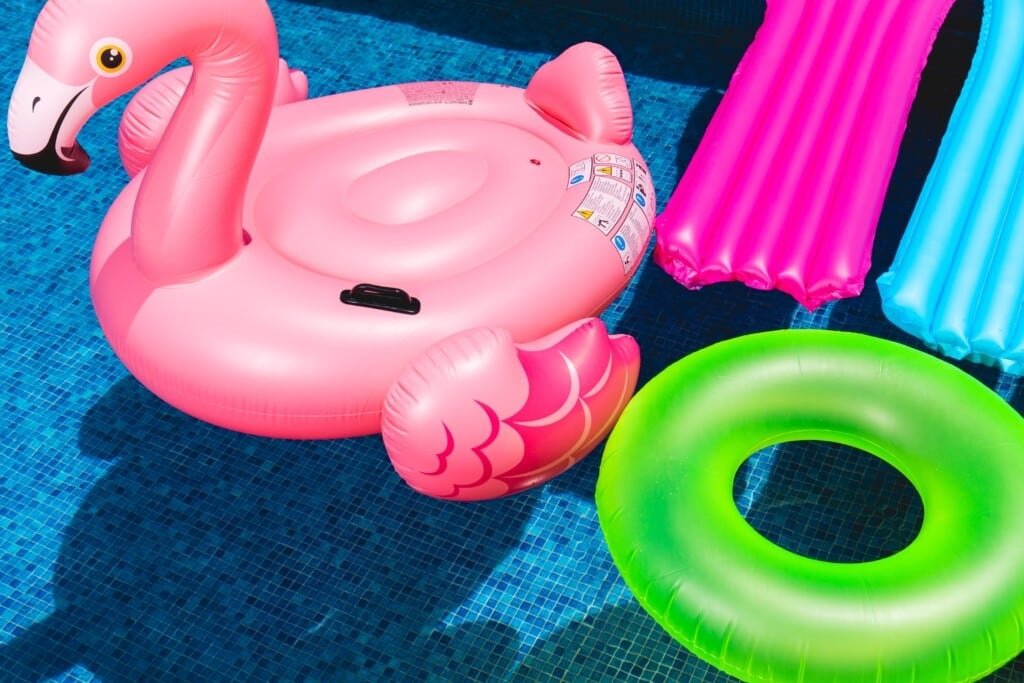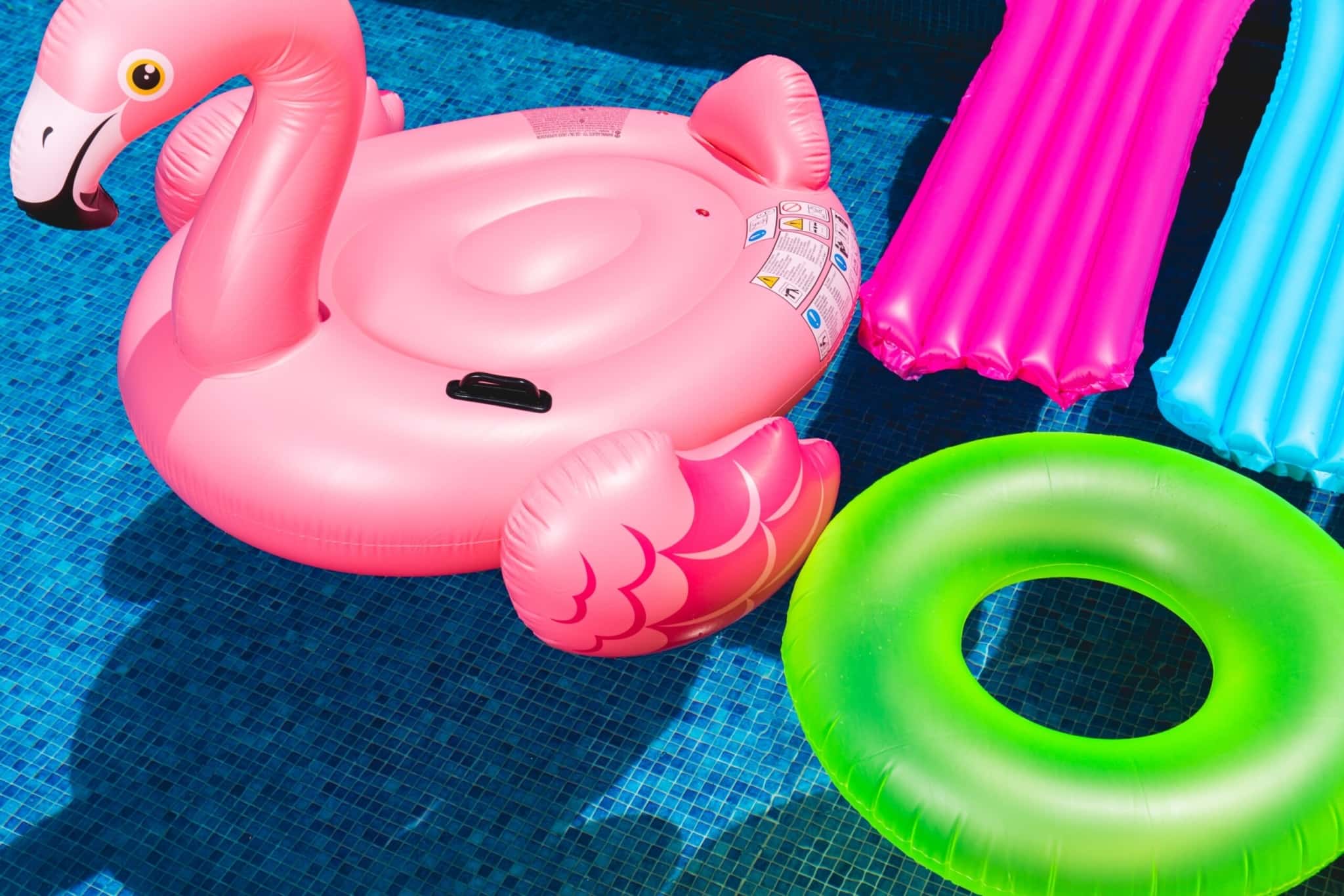How To Maintain a Pool

Having a pool is one of life’s luxuries, especially during the hot summer months in Texas. Swimming pools are fun for all ages, from relaxing by the water to hosting a pool party.
But with this enjoyable pastime, pools do require quite a lot of maintenance, including weekly, monthly, and yearly tasks. To properly maintain your pool so that you can enjoy it all season long, read on for essential supplies and the best steps to take.
Keys to a Clean Pool
Keeping your pool sparkling and ready for summertime gatherings is important for anyone with access to one in their backyard. Some of the main aspects of keeping a clean pool include the following:
- Adding algaecide to the pool water to slow and discourage algae growth that affects your pool’s quality and appearance
- Brushing down the pool walls, ladders, and steps to loosen and remove any debris that has hardened
- Checking your pool’s pH levels and chemical balance
- Ensuring that the water is circulating properly to maintain filtration and promote the prevention and disruption of bacteria and algae growth
- Routinely checking and clearing the pool filter
- Shocking the pool water to elevate free chlorine levels and destroy bacteria and algae growth.
Essential Pool Maintenance Items
What do you need to keep your pool clean and healthy? Surprisingly, pool owners do not need too many supplies or tools to ensure your pool is in top shape. Stock up with the following items for easily maintaining pools yourself:
- Algaecide
- Chlorine Test Kit
- Disposable Gloves
- Filter Cleaner
- Long-Handled Pool Brush
- Long-Handled Pool Skimmer
- Nonslip Shoes
- pH Balancer
- pH Testing Kit
- Pool Net
- Pool Vacuum
- Safety Glasses
- Sanitizer (including Bromine, Chlorine, or Salt)
- Shock Treatment Mixture
- Water Clarifier
Safety First in Pool Maintenance
Cleaning and maintaining a pool yourself is not an incredibly difficult or dangerous undertaking. Still, because you are working with chemicals and a large, open body of water, it is crucial to take your safety into consideration.
This includes:
- Adhere to the dosage recommendations on all pool chemical products to avoid personal injury and the over-use of substances in the water that could later harm swimmers.
- Avoid mixing products—never combine pool chemicals with any household products or chemicals for use in spas.
- Store chemicals according to the manufacturer’s specifications, out of reach of children, away from high-traffic areas, and with correct labels.
- Use clean gloves and wear safety glasses whenever handling pool chemicals or products to prevent skin irritation or even burns.
- Wear nonslip shoes during pool cleaning and maintenance to avoid slipping and falling into the water.
Regularly Scheduled Pool Maintenance Steps
To keep your pool in top shape for cannonballs and poolside afternoons, you should work regular maintenance tasks into your weekly, monthly, and yearly schedule. This includes the care and maintenance steps discussed below.
Weekly Pool Maintenance
While the maintenance that your pool requires depends somewhat on its use, the following are general timetables for weekly pool duties.
Twice Per Week—Check The Water Balance in the Pool
It’s important to test the water twice per week during seasons of high pool use to keep the chemistry in your pool at sufficient and safe levels.
When your water is improperly balanced, it will appear cloudy, green, or have a bacteria buildup that can be harmful to swimmers. But with easy pool testing kits, you can ensure the correct chemicals keep the water balance where it should be, including:
- Alkalinity—Because alkalinity is a bicarbonate material that buffers changes in pH levels, it is important to keep it at a safe level. Your pool should maintain an alkalinity level of around 120 to 150 ppm to avoid staining and water cloudiness.
- Calcium Hardness—When your pool’s calcium levels are too low, it will affect the finish of the pool structure itself and the vinyl liner, if you have one. Make sure you keep it between 200 to 400 ppm to avoid calcium deposits in your pool.
- Chlorine—One of the main aspects of water balance, chlorine is used to break down harmful bacteria that could make swimmers sick, as well as sanitize your pool water. Chlorine levels can vary but try to keep it between 1 and 3 ppm.
- pH—These gauges might seem baffling to swimming pool beginners, but pH levels determine many aspects of water quality. Too high a pH value can lead to corrosion; too low to rampant algae growth. Pool pH should be 7.5 in most cases.
- Phosphates—If the phosphate levels in your pool are too high, the water might begin to look cloudy and vaguely green. This means algae is growing rapidly and will affect the health of your pool, so keep phosphates between 100-125 ppm.
Twice Per Week—Eliminate Insects and Leaves
Keep your pool water clean by removing the insects and leaves that show up across the surface or sink to the bottom. You can use a pool skimmer to accomplish this quickly, but do exercise caution when leaning out to reach the center of the pool, so you don’t fall in.
Using a leaf rake to collect it is good if there is larger debris, such as fallen leaves. This will prevent leaf matter from sinking to the bottom and leaving nitrogen stains on the structure of your pool.
However, if you notice a lot of debris or floaters in your pool, you might want to skim it every day. This is advisable in areas where bugs are prevalent during the summer. You don’t want to encounter a floating wasp when going for your daily dip.
Once Per Week—Brush the Walls and Clean the Bottom
By scrubbing the sides and bottom of your pool once a week, you can eliminate major stains and algae buildup. Additionally, brushing the areas around crevices, drains, ladders and steps will remove scaling or grease and prevent it from accumulating.
Once Per Week—Shock the Pool Water
“Shocking” the water refers to overloading your pool with safe sanitizers that will eliminate all bacteria and contaminants, including organic matter. Some of the best sanitizers include:
- Calcium Hypochlorite
- Dichloroisocyanuric Acid
- Potassium Peroxymonosulfate
It can be done once a week for frequently used pools or biweekly for less-trafficked waters. In addition, you should shock your pool after any large gathering such as a summertime pool party or extreme weather events, removing pollutants or contaminants.
Monthly Pool Maintenance
Because most pools are used primarily during the summer months, these tasks will be more critical between April and September, depending on your location and how long summertime weather lasts.
Professional Water Sampling
Your twice-weekly testing is a good indicator of your pool’s overall health and water balance levels. But it is a good idea to get a professional sample once a month, at least over the summer, especially if your pool has many people circulating through it.
Get Rid of the Green
When you think of the ideal backyard pool paradise, you likely picture clear blue waters. Don’t let your swimming area turn into a murky swamp due to algae or copper buildups in the water.
By keeping your water and chemical levels balanced, you should prevent the growth and spread of algae. Ensure that your pH and phosphate levels are adequate if the pool starts to look a bit verdant.
Another cause of green-tinged waters is a buildup of copper. This occurs when water used to fill the pool has a low pH level and erodes copper materials in the pool’s filter, lining, or plumbing. Use a special copper test strip to determine heavy metal levels.
If the test strip comes back positive for a high level of copper erosion, purchase a metal trap filter to replace your typical water filter. Alternatively, invest in a hose filter for refilling the pool—this device will prevent copper from appearing in the first place!
Yearly Pool Maintenance
Even if your pool has not been used for a while, yearly maintenance tasks still need to be completed. This ensures that the entire fixture and its plumbing systems are in good condition and ready to be used again next summer.
Check the Pool Systems
Once a year, you should inspect all the plumbing and circulation systems in your pool. This includes the pump and filter systems, drains, and any other pipework you can see. Lubricate any o-rings on the pump and filters, including the valves, to prevent sticking.
Inspecting the pool annually will ensure that you catch any issues that might arise before it becomes a significant problem. Often, when a slight complication in the pool system is caught early, expensive damage is prevented.
Deep Clean Pool Filters
It’s advisable to give your pool’s filters a deep clean with chemicals about once a year, either just before or after the season of highest pool use. This will flush out the filters, pipes, and drains and eliminate any residual bacteria that has clung to them.




There are no comments
Comments are closed.